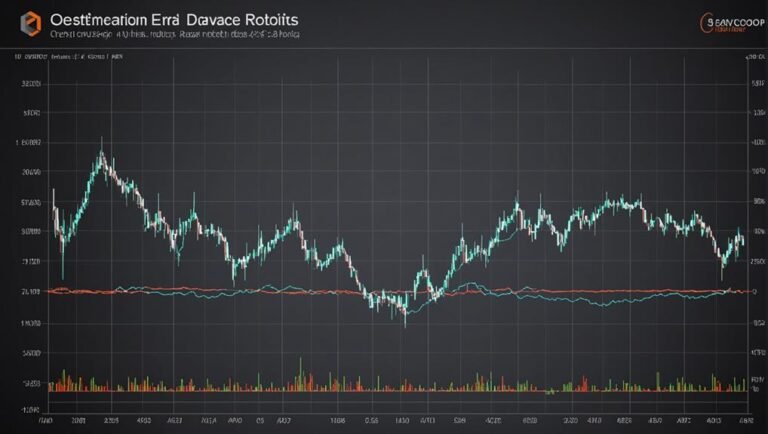Descriptive Statistics: Definition, Overview, Types, Example
Descriptive statistics are critical in analyzing and summarizing data efficiently by using techniques like histograms and scatter plots. Measures of central tendency such as mean, median, and mode help in understanding data's central values. Variability measures like range and variance quantify data dispersion. Different types of descriptive statistics include central tendency, variability, and distribution measures. Examining frequency distribution and using statistical summaries aid in understanding data characteristics. Bivariate analysis explores relationships between two variables, offering insights into their interactions. Understanding these aspects is essential for effective data interpretation. Explore further to deepen your grasp of descriptive statistics.
Key Takeaways
- Descriptive statistics summarize data with measures like mean, median, and mode.
- Types include central tendency, variability, distribution measures, and univariate/bivariate analysis.
- Visualizations like histograms and scatter plots aid in data representation.
- Descriptive statistics help in understanding data characteristics and patterns.
- Examples of descriptive statistics include calculating averages, analyzing spreads, and identifying outliers.
Key Concepts in Descriptive Statistics
The fundamental principles of descriptive statistics serve as the cornerstone for analyzing and summarizing data sets efficiently and effectively. Data visualization techniques play an essential role in descriptive statistics by presenting data in a graphical format, aiding in better understanding and interpretation. Visual representations such as histograms and scatter plots help in depicting data characteristics, providing a clear picture of the distribution and relationships within the data set.
In contrast, statistical inference involves making predictions or generalizations about a population based on sample data, differing from the descriptive nature of statistics. By comparing these two approaches, one can appreciate the distinct purposes they serve in data analysis: description versus prediction, past events versus future outcomes, and summarizing data versus making inferences.
Central Tendency Measures
In exploring Central Tendency Measures within descriptive statistics, a key aspect to ponder is their role in summarizing the central values of a data set.
The mean, median, and mode are fundamental measures used to understand the typical or central value of a dataset.
The mean is calculated by adding all values and dividing by the total number of observations, providing an average value.
The median represents the middle value when data is ordered, unaffected by extreme values.
On the other hand, the mode is the most frequently occurring value in a dataset, highlighting the highest frequency.
Understanding the differences and interpretations of mean, median, and mode is essential for gaining insights into the central tendencies of data.
Variability Measures
Variability measures in descriptive statistics quantify the dispersion or spread of data values around the central tendency. They provide essential insights into the diversity and distribution of data points, complementing central tendency measures.
In understanding variability, outlier detection plays an important role, highlighting extreme values that could skew the analysis. Additionally, data visualization techniques such as box plots or scatter plots help in visually representing the spread of data points, aiding in the identification of patterns or anomalies that might impact the overall analysis.
These measures are crucial in gaining a thorough understanding of the data's range and distribution, ensuring a more nuanced interpretation of the dataset.
Types of Descriptive Statistics
Pivoting from the discussion on variability measures in descriptive statistics, an examination of different types of descriptive statistics reveals distinct categorizations for analyzing data characteristics. These types include central tendency measures such as mean, median, and mode, as well as variability measures like range, quartiles, and variance. Additionally, distribution measures the frequency of data points, while univariate analysis focuses on a single variable and bivariate analysis links two variables. Descriptive statistics categorize data into various types to provide statistical summaries and utilize data visualization techniques for better understanding. Here is a table illustrating some key types of descriptive statistics:
| Type | Description |
|---|---|
| Central Tendency | Mean, Median, Mode |
| Variability | Range, Quartiles, Variance |
| Distribution | Frequency of Data Points |
| Univariate Analysis | Analysis of a Single Variable |
| Bivariate Analysis | Analysis of Two Variables |
Distribution and Univariate Analysis
A fundamental aspect of data analysis involves examining the distribution of data points and conducting univariate analysis to gain insights into individual variables.
- Frequency Distribution: Helps in understanding how often each value occurs in a dataset.
- Statistical Summaries: Provide key metrics like mean, median, and mode to describe the central tendency of the data.
- Univariate Analysis: Focuses on analyzing a single variable at a time to understand its characteristics.
- Distribution Analysis: Involves examining the spread and patterns of data points within a dataset to identify trends and outliers.
Bivariate Analysis in Descriptive Statistics
Examining relationships between two variables within a dataset is an important component of descriptive statistics known as bivariate analysis.
In bivariate analysis, correlation analysis is commonly used to measure the strength and direction of the relationship between the variables.
Scatter plots are often employed to visually represent the relationship between two variables, where each point on the plot represents a unique data point with values for both variables.
The pattern or trend observed in a scatter plot can provide insights into the nature of the relationship between the variables, whether it is positive, negative, or neutral.
Bivariate analysis plays a significant role in understanding how two variables interact within a dataset, offering valuable insights for further analysis.
Real-Life Applications and Examples
In real-world scenarios across various industries, the practical application of descriptive statistics plays an essential role in extracting meaningful insights from data sets.
- Practical uses
- Businesses utilize descriptive statistics to analyze sales trends and customer preferences.
- Healthcare professionals use descriptive statistics to understand patient demographics and treatment outcomes.
- Educational institutions employ descriptive statistics to assess student performance and improve teaching strategies.
- Government agencies rely on descriptive statistics to make informed policy decisions.
Everyday examples
- Calculating average household income in a specific region.
- Analyzing the distribution of ages in a population.
- Determining the most common mode of transportation used by commuters.
- Evaluating the effectiveness of a marketing campaign based on customer response rates.
Conclusion
In the intricate tapestry of data analysis, descriptive statistics serve as the illuminating stars guiding us through the vast expanse of information. Through their central tendency and variability measures, they expose patterns and nuances hidden within datasets, offering a beacon of clarity in the sea of data complexity.
Like a skilled artist revealing the beauty within chaos, descriptive statistics provide the key to revealing meaningful insights and driving informed decisions in various fields of study and industry.







